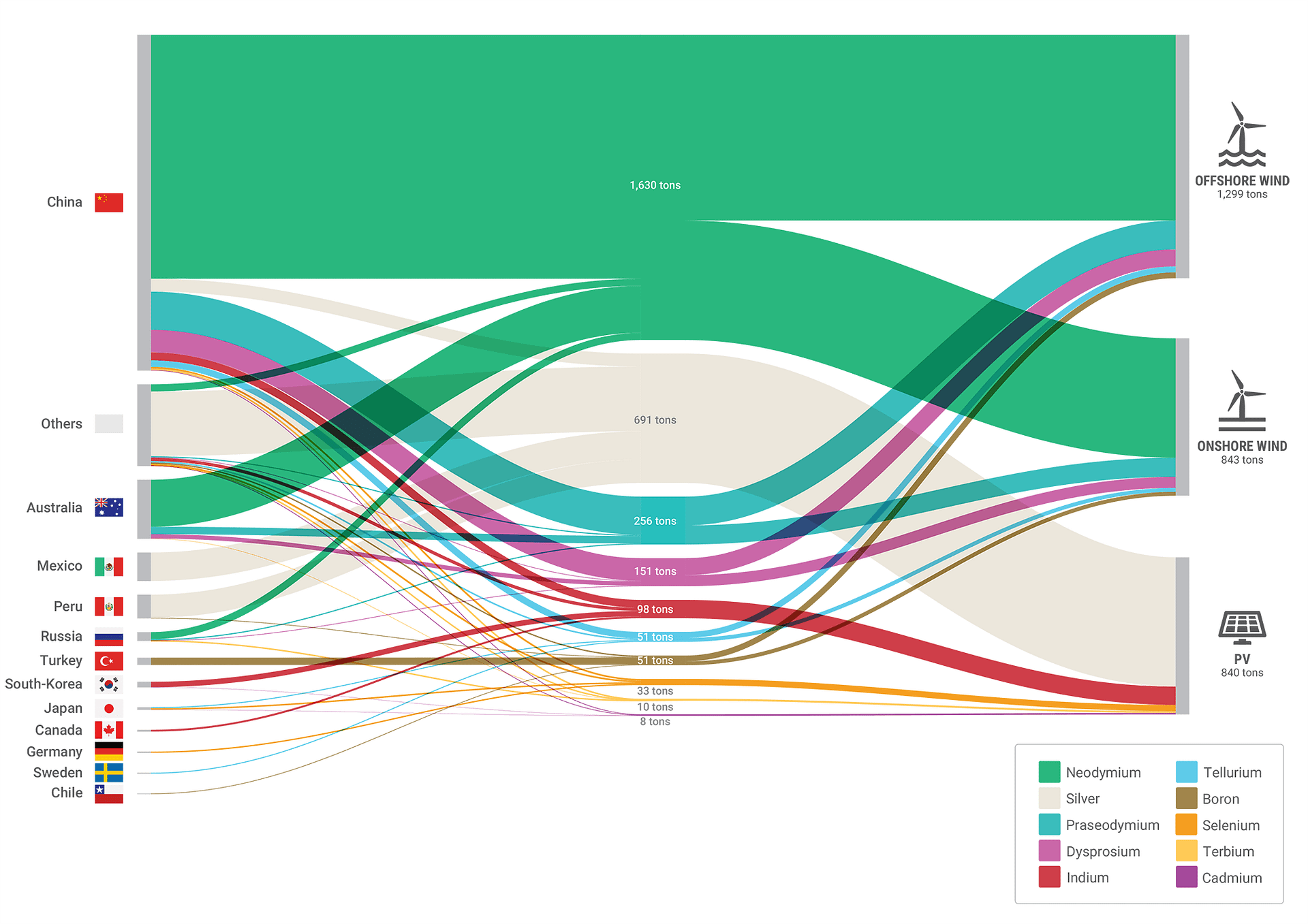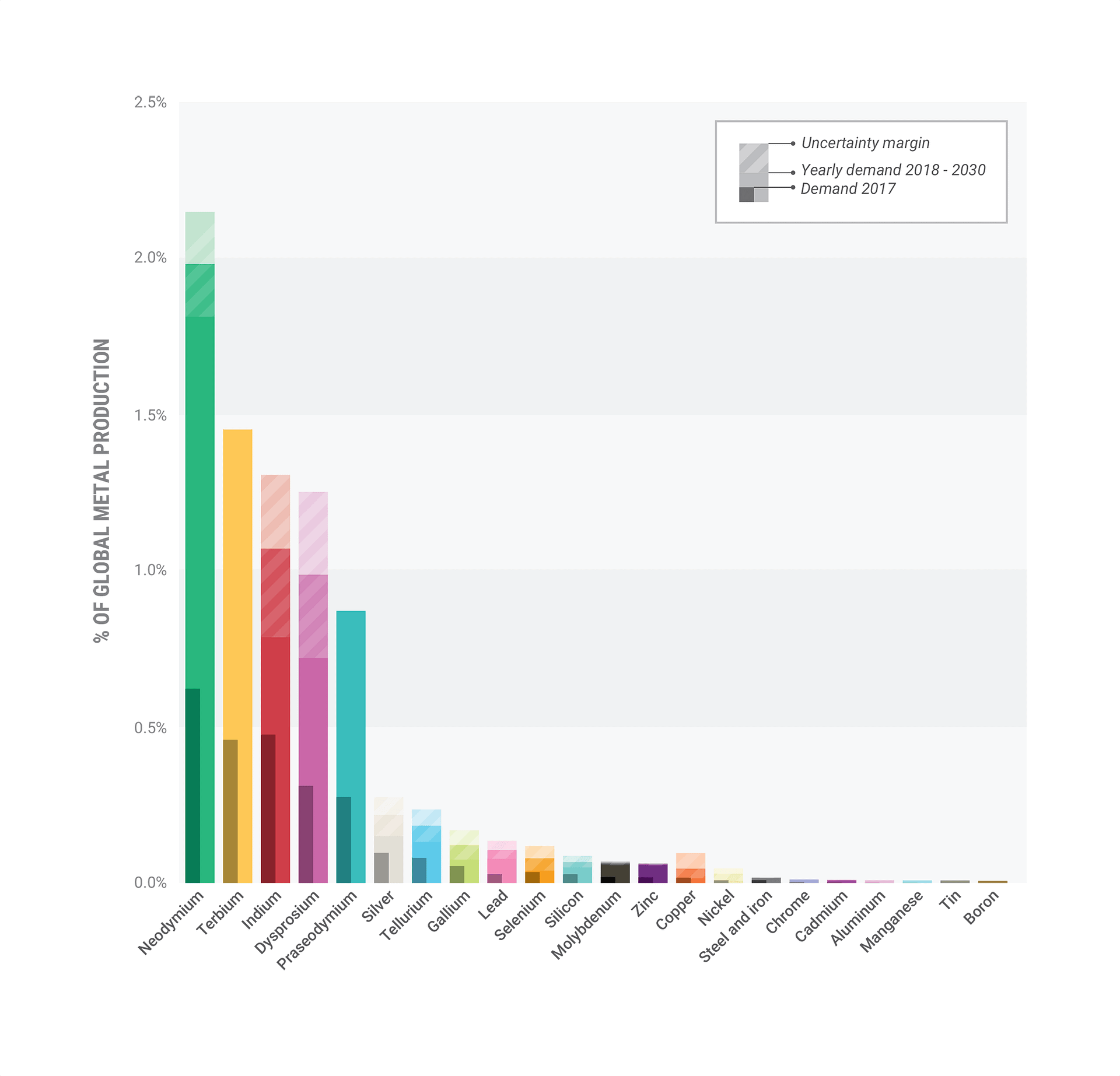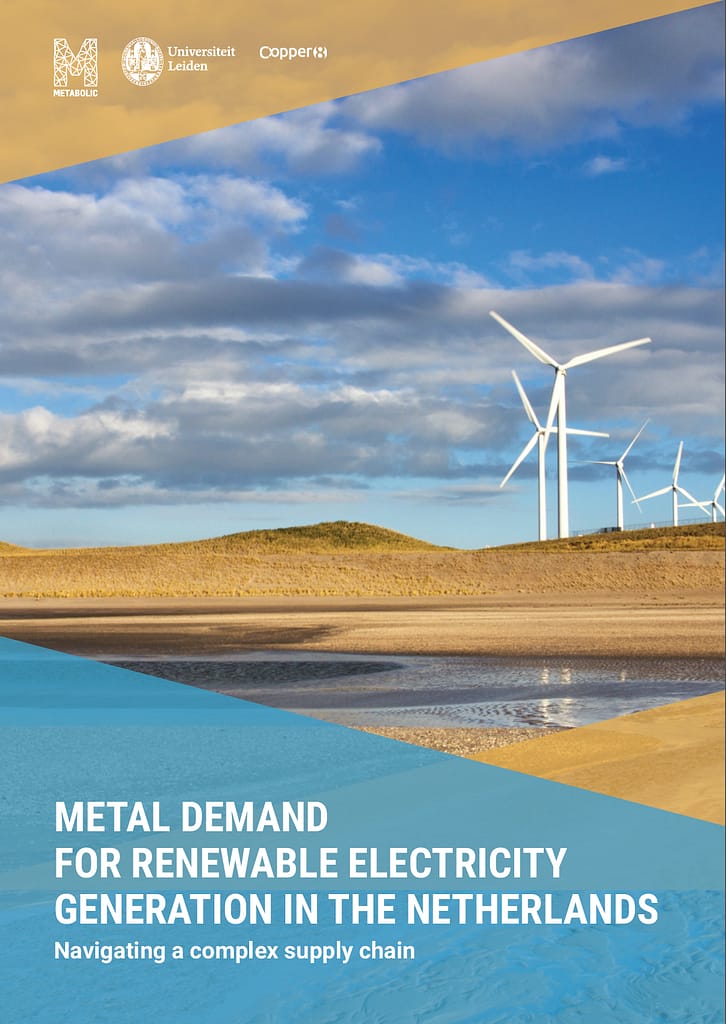Critical metal demand for the renewable energy transition
Navigating a complex supply chain
Meeting Paris Climate Agreement Targets will require a rapid global rollout of renewable energy technologies. With the production of these technologies reliant on specific rare metals as inputs, Metabolic analyzed the supply chain and production dynamics of wind turbines and solar panels to understand whether current global supply of these metals is sufficient to meet growing renewable energy demands.
- Client: Ministry of Infrastructure and Water Management
- Partners: Copper8 and University of Leiden
- Date: December 2018
The energy transition requires a rapid, global rollout of renewable energy technologies, and the production of these technologies is reliant on several critical metals. Neodymium, terbium, indium, dysprosium, and praseodymium are all used in the production of wind turbines and solar panels, yet mining and refining of these ores is concentrated in just a few countries. Additionally, the scaling rate for production of these metals is relatively slow. To avoid an unexpected disruption in the transition to renewable energy systems, we must understand the volumes we have, and safeguard these metals accordingly.
In this research, we analyzed the demand for rare earth elements and other minor critical metals for renewable energy in the Netherlands. The research was limited to solar and wind technologies, since these are expected to provide the bulk of electricity in the future, according to the Dutch Climate Agreement, which we use as the basis for 2030 renewable energy targets.
The analysis revealed that the current global supply of several critical metals is insufficient to transition to a renewable energy system. To ensure sufficient supply, a global and robust climate policy needs to be implemented hand-in-hand with circular economy strategies to reduce critical metal dependence. The findings were presented at the Circular Hotspot event at COP24 in Katowice, where the in-depth analysis and clear visualizations made this complex problem understandable for a wider audience, inclusive of policy makers.














“It is essential for us to manage materials in a circular fashion in order to ensure that we have enough for the technologies critical to a low-carbon future.”
- Eva Gladek, Founder and CEO, Metabolic
Director of Product – Metabolic Software
ANY QUESTIONS?
For more information about this project, please get in touch.






